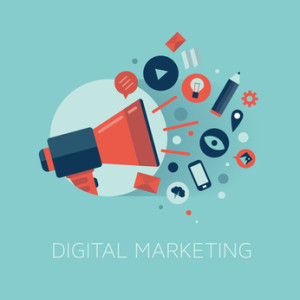 As standalone software, CRM has a lot to offer. It can manage and track customer interactions, standardize customer service experiences, and simplify the sharing of data across all departments. These are just a few of the things that CRM does, and does well.
As standalone software, CRM has a lot to offer. It can manage and track customer interactions, standardize customer service experiences, and simplify the sharing of data across all departments. These are just a few of the things that CRM does, and does well.
However, like any software, CRM wasn’t designed, or intended, to do everything. This fact has created a booming business for companies that make software that complements CRM. One of the fastest growing software categories is that of marketing automation. While marketing automation software can be used without CRM, and vice-versa, they work so well together that the whole is often greater than the sum of its parts.
What it is
There are a lot of long, complicated definitions of marketing automation software available. A simpler, or at least shorter, definition is that it automates marketing processes based on prospect interactions and interests, allowing for greater efficiency, improved customer experiences, and higher conversion rates.
Available in SaaS and on-site installations, marketing automation software is designed to take over many of the labor- and time-intensive tasks that were once left up to personnel in the marketing department. Instead of spending their time reacting to every prospect interaction, marketing and sales personnel can focus on high-priority prospects who are at the peak of the buying cycle.
How it Works
Robust marketing software tracks every interaction with a prospect. If they fill out a form on the company’s website, “like” the company’s social media page, or send an email to the company, the interactions are recorded and scored. The software can take into account things like the purpose of the form, the content of the post that was “liked,” and even the keywords and recipient of the email.
All of that data is used to determine what content should be sent out to the prospect. If they downloaded a white paper about a company product, the software can start sending them useful content that’s relevant to their download. If the social media post was about an upcoming company event, they may start receiving updates about the time and place, schedule, etc.
The point is to continue nurturing the relationship automatically until they become a “hot” prospect, or bounce out of the sales funnel. Using this system, marketing personnel can focus on creating and targeting content for large numbers of buyer personas, instead of focusing on a few individual prospects.
Marketing Automation and CRM
As a complement to CRM, automated marketing improves the prospect-to-customer pipeline. Having a large number of prospects entering the sales funnel isn’t always a good thing. If unqualified leads are moving farther into the funnel, it can overwhelm sales staff and reduce ROI.
Marketing automation software acts as an intelligent gatekeeper. Prospects are nurtured and engaged until they become qualified leads, then they’re moved farther into the funnel. This keeps the sales personnel from being overwhelmed with leads that never turn into customers. By keeping non-starters out of the labor intensive stages of the sales funnel, the software improves ROI for both the marketing and sales departments.
As leads are nurtured and engaged, their interactions are constantly measured and evaluated. If they remain cold, the nurturing and engagement continues automatically. Once the lead turns hot, the software can automatically notify the relevant personnel in the sales department. All of the interactions and data can be automatically entered into the CRM system, showing the sales department every detail of the lead’s interactions. Having a hot lead, and all of the details on what made them a hot lead, is a huge advantage for any salesperson.
Some of the Players
There are a lot of vendors providing marketing automation software. There are also more than a few CRM vendors out there. Here are a few of the automation vendors, along with some of the CRM systems they integrate with:
Hubspot: Hubspot provides content management software with integrated marketing tools, and also integrates with salesforce.com, Microsoft Dynamics, SugarCRM, Highrise, and others. They provide an API for other integrations.
Eloqua: Integrates with Microsoft Dynamics, RightNow, salesforce.com, and Oracle CRM using native connectors. Eloqua also provides an API and a robust library of templates and best practices to ease integration with other CRM products.
Marketo: Provides native integration with salesforce.com and Microsoft Dynamics. Certified partner integrations are available for Netsuite, Oracle, SugarCRM, and more.
Pardot: Previously a stand-alone marketing solution, Pardot was acquired by salesforce.com and is now an integrated marketing automation solution within the Salesforce family of products.
Infusionsoft: An “all in one” provider, Infusionsoft is a CRM provider that includes marketing automation with all of their packages.
In a Nutshell
Like fingers on a hand, CRM and marketing automation work independently and together to accomplish the same basic tasks. CRM is about managing and improving customer relationships, while marketing automation is about starting those relationships on the best foot. Without either finger, the hand still works, just not as well.

